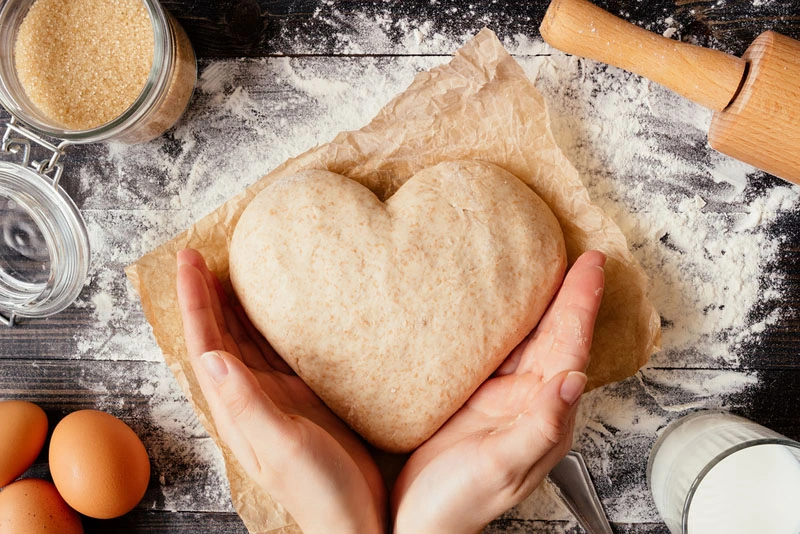There’s nothing quite like the aroma of freshly baked bread wafting through the house. The soft, warm center, contrasted with a crispy, golden brown crust, promises a delicious treat that’s both fragrant and flavorful. Our guide to homemade bread recipes ensures you can recreate this experience in your kitchen. Dive into these delightful recipes that will make you feel like a seasoned baker.
Understanding the Basics of Bread Making
The foundation of different baking recipe lies in understanding the main ingredients and their roles in the baking process.
Basic Ingredients You Need For Baking
These are as follows:
- Wheat or Bread Flour
- Yeast
- Butter
- Eggs
- Lecithin, Soy or Sunflower
- Sugar and Slat
The Role of Flour in Bread Making
Flour, often bread flour or wheat flour, is the backbone of any bread recipe. It provides the structure and protein necessary for the bread’s texture.
Yeast: The Rising Star
Active or Instant Yeast is the magic behind the rising process, turning your dough into a fluffy loaf. It feeds on the sugar, producing carbon dioxide, which causes the dough to rise.
Balancing with Salt and Sugar
While sugar feeds the yeast, salt regulates its action, ensuring the bread has a harmonious texture and flavor.
Enhancing Flavor with Butter and Eggs
Butter adds richness and a mouthwatering aroma to your loaf, while eggs contribute to the bread’s color and moistness.
Read more About How to store Homemade Bread
Steps to Achieving the Perfect Loaf
Every bread recipe follows a basic sequence, from kneading the dough to letting it rise and finally baking it to golden brown perfection.
Mixing and Kneading: Building Texture
Begin by mixing your ingredients in a bowl, then knead the dough on a floured surface. If using a stand mixer, ensure everything is well combined. This process develops the protein in the flour and helps in giving your bread its structure.
The Importance of Rising
Place your kneaded dough in a bowl coated with a bit of oil, covering it with plastic wrap. Allow it to rise at room temperature until it has doubled in size. This step ensures a soft and airy loaf.
Baking: Achieving that Golden Crust
Preheat your oven and place your dough in loaf pans or on parchment paper if aiming for a French bread style. Bake until the crust is golden brown and the bottom sounds hollow when tapped.
Cooling and Storing: Ensuring Freshness
After baking, transfer your loaf to a cooling rack. Once cool, store in an air-tight container to retain its freshness. If storing for longer, wrap in plastic wrap and store in the fridge.
Tips for a Delicious Homemade Bread
Even with the best bread recipes at hand, some additional advice can make all the difference in your baking journey.
Choose High-Quality Ingredients
The quality of flour, yeast, and other ingredients plays a significant role in the final flavor and texture of your bread.
Maintain the Right Temperature
Yeast works best at certain temperatures. Ensure your water is warm – not hot – to activate the yeast without killing it.
Be Patient with the Rising Process
Give your dough adequate time to rise. Rushing this step could lead to a dense loaf.
Conclusion
In conclusion, baking homemade bread might seem intimidating, but with the right recipes and techniques, anyone can produce a loaf that’s the toast of the house. Embrace the process, savor the results, and relish the compliments from family and friends. Happy baking!
Frequently Asked Questions
Is there a vegan substitute for butter in bread recipes?
Yes, you can use plant-based margarines or oils like olive oil as a vegan substitute for butter.
Can I bake bread without a loaf pan?
Absolutely! Bread can be shaped and baked on a baking sheet or stone for a more rustic look.
What if I don’t have a stand mixer for kneading?
You can knead the dough by hand on a floured surface, using a push and fold technique.




